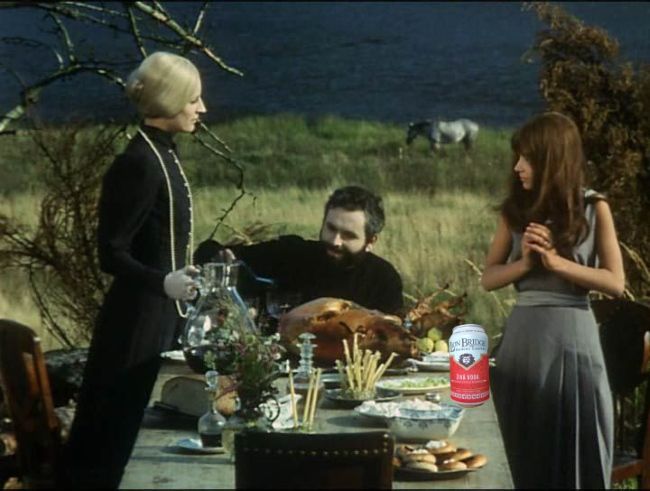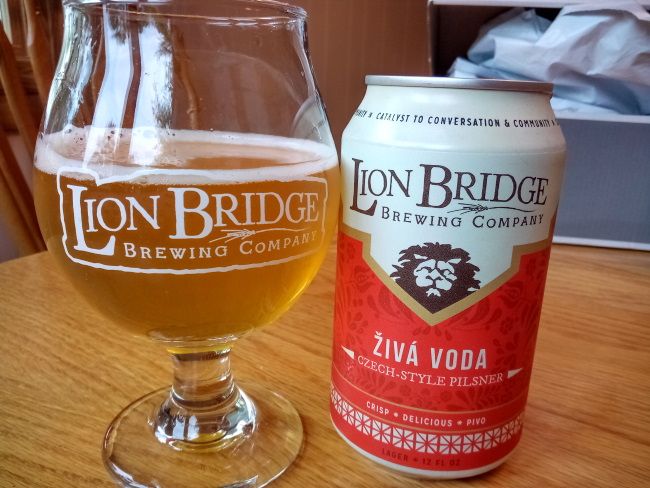Back in May my Frau and I made a trek west to Iowa. Our destination was Iowa City where we would see the remarkable Valerie June in concert but we made a short detour to Cedar Rapids. Neither of us had ever been there previously and we wanted to visit the African American Museum of Iowa. If you ever find yourself in Cedar Rapids, I highly recommend stopping in at the museum. Even with its clear focus on Iowa, I, a Cheesehead, found it fascinating and got a lot out of it. Similarly, if you ever get the chance to see Valerie June perform, heed Steve Winwood's advice and take it.
After our museum visit was over, we pondered what to do next. There were signs for a “Czech Village” that lay just across the river and that sounded intriguing so away we went. It turned out that Cedar Rapids had a fair number of Czech and Slovak immigrants settle there back in the day. I am sure this is all well-documented at the National Czech & Slovak Museum & Library in Czech Village but we didn’t stop there so you’re stuck with the results of my internet searches.
One site says that Czechs began arriving in Cedar Rapids in 1852 but I found nothing about when Slovakian folks started to settle there. Maybe the sites' authors consider these ethnic groups to be one and the same since, if memory serves, their lands, presumably, Bohemia and proto-Solvakia, were part of the Austro-Hungarian Empire at this time. I think. They were drawn by the prospect of agricultural jobs including work at the Sinclair meat packing plant in town. (Hey! Just like Postville.) I suspect that, for most non-Iowans, corn comes to mind first when the state is mentioned but there's more to Iowa than maize. It also processes a lot of hogs and cattle as well. The commercial/retail center of the town’s Czech-American community was what is now Czech Village.
The day we visited the weather was agreeable with the sun shining brightly and so shopkeepers peddled their wares out on the sidewalks as people strolled the streets going from storefront to storefront. We eventually found ourselves standing before Lion Bridge Brewing Company feeling thirsty so we stepped inside for refreshment.
While the taproom was rather sparsely populated, we could see that the patio was hoppin'. As expected, there was no shortage of those dreaded IPAs on the beer menu. However, I was impressed to find that one of their year-round brews is an English mild called Compensation. We were tantalized by several of the offerings on the big board so we ordered a flight, including Compensation, which was quite tasty. I also liked the coffee Kölsch. Their tangerine wheat beer was a nice surprise with its bright citrus flavor and light body which made it pleasantly similar to Allagash White.
Being in the middle of Czech Village meant nods to the neighborhood’s history. Bohemian Lager was brewed with rice and sounded like an American adjunct pilsner that has Saaz hops in it instead of whatever type of hops craft brewers usually put into their Bud/Miller knock offs. But Živá Voda (“living water”) was a more traditional Czech-style pilsner and we came home with a 6-pack.
Here in the States “Czech-style pilsner” is a catch-all term for pilsners that the brewmaster deems Czech-like. It perhaps implies that there is but a single version of pilsner over in that part of the world. But as Evan Rail and others have documented for non-Czech speakers, there are a variety of styles and sub-styles over there. I suspect all of those diacritical marks and degree notations such as "12°" used by Czech brewers make things more complicated than most Americans care to deal with. Therefore anything with Saaz or Saaz-tasting hops = Czech-style.
My pour of Živá Voda got a fairly small, loose, white head that, sadly, went away quite quickly. Is that beer chemistry? Or a lousy pour? The liquid was a gold-tinged yellow and just slightly hazy. (Likely chill haze.) As expected, there were lots of bubbles inside. Let me tell ya, this stuff smelled wonderful with a luscious aroma of grass and cracker joined by a faint bit o’ honey and a little sumpin’ sumpin’ floral. It smelled like a summer day out in the country. This aestival aroma of the pilsner is probably my favorite beer smell of all. (A good, fresh rauchbier is right behind.) I don't what it is, but that aroma just goes straight to my hippocampus which triggers the release of dopamine or oxytocin or something and life just feels good.
All those bubbles made for a firm fizziness. The lovely grainy taste was like a biscuit-cracker amalgam. A hint of spicy hops lurked underneath as did a flavor like hay. It had a nice crispness and was a bit astringent tasting. The finish was definitely on the dry side with a moderate bitterness – a bit mellower than expected for a “Czech-style” pilsner – as the grainy flavors faded.
Živá Voda is excellent! The cracker taste of the grain was just tastilicious and the hops were a bracing counterpoint on a rather hot day. My can was dated 2/14/22 so it wasn’t the absolute freshest and I suspect this is why the hops seemed a bit muted for a Bohemian-style brew.
Junk food pairing: a beer brewed in a Central European style deserves junk food in a Central European style. Pair your Živá Voda with a bag of Jay's Hot Stuff potato chips and its wonderful paprika flavor harmonized with a bit of heat.


No comments:
Post a Comment